Employee training!
At Collier, our team of professionals take part in trainings to ensure we are performing work to the highest standard. No matter your experience, keeping up-to-date with training can save time, cost, and ensure safety on the job site!
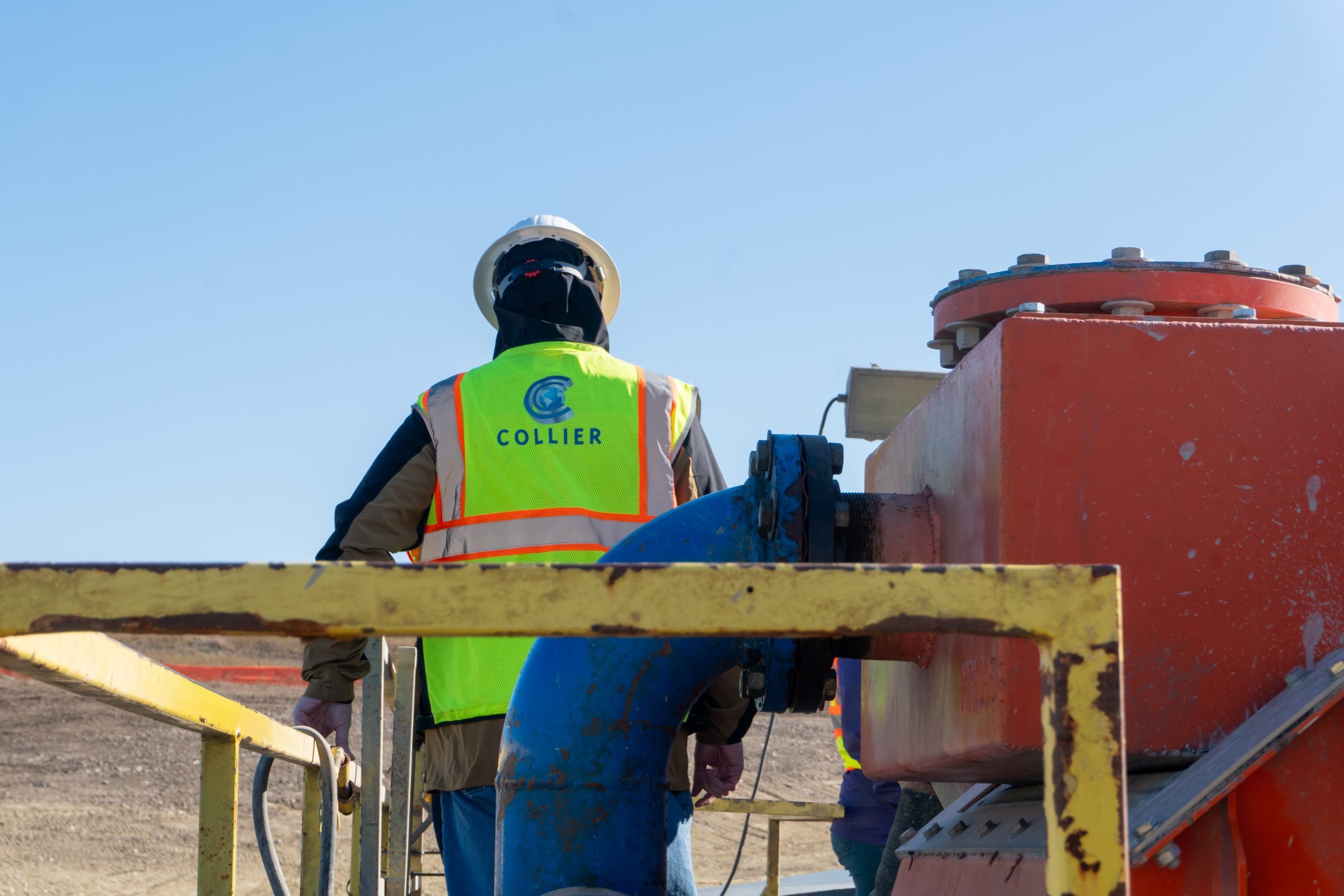
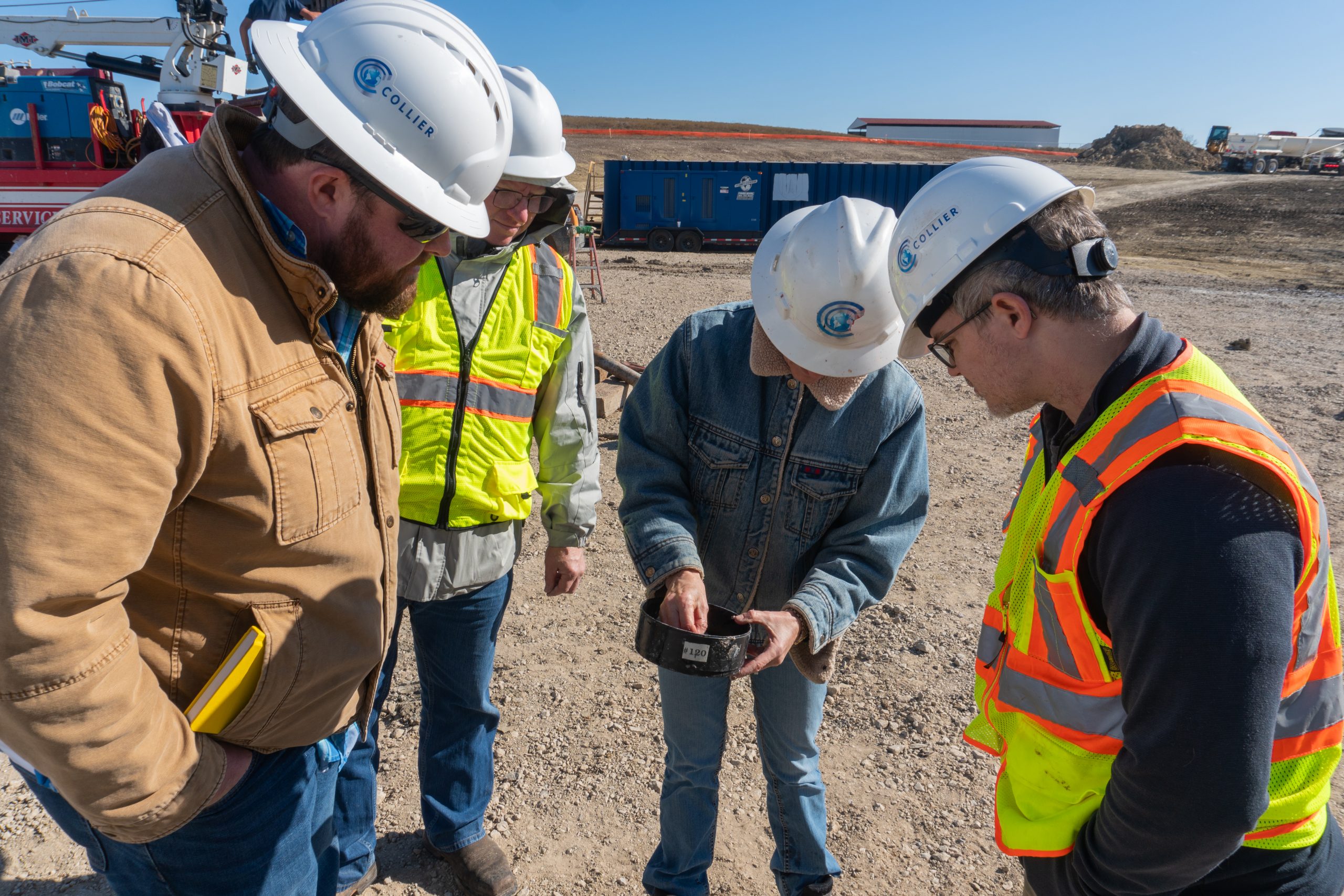

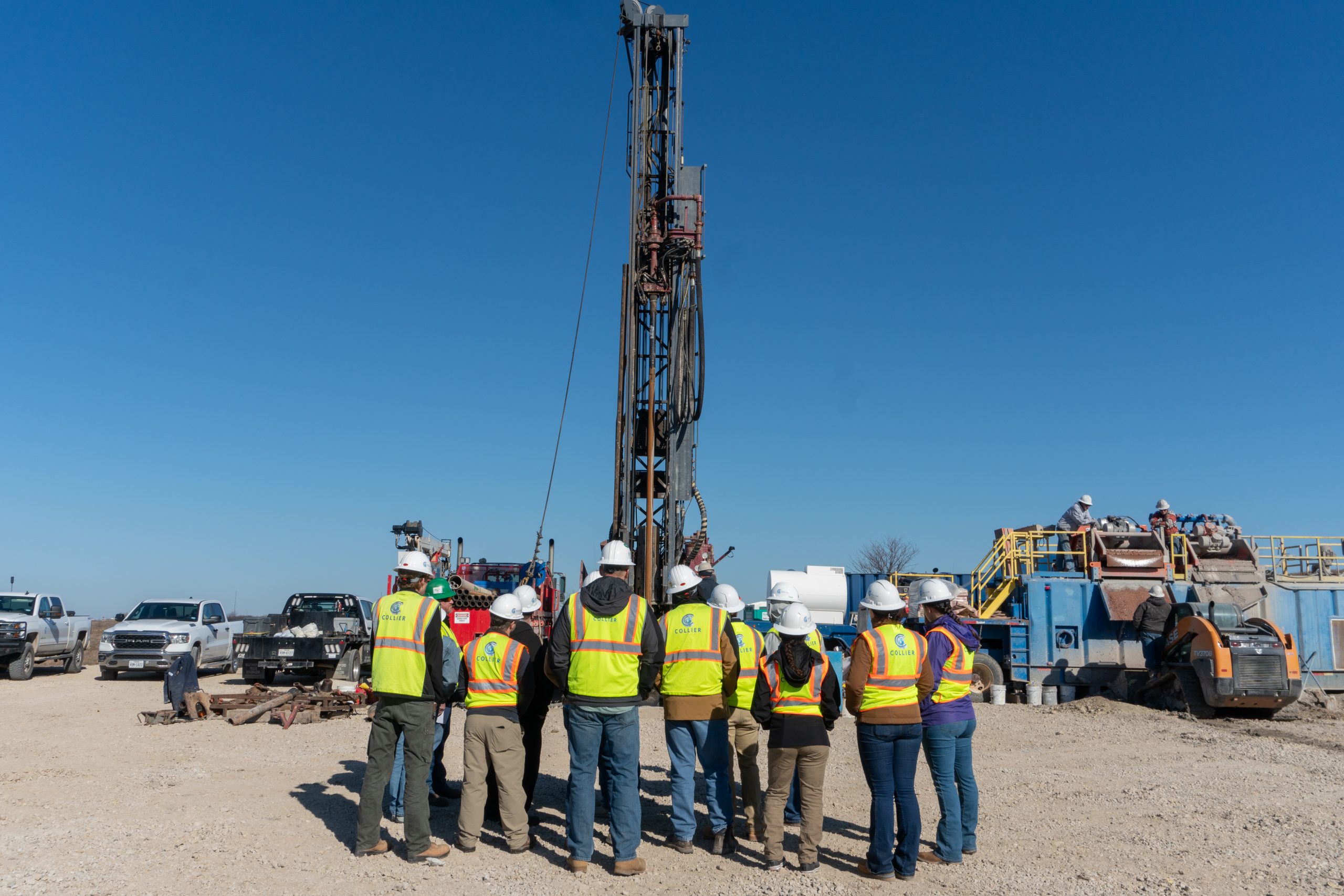
Picture of the month prepared by Andrew Stone, Hydrogeologist, andrewstone@gmail.com
WELLS IN BEDROCK FRACTURES
How often do you get to see a cross-section of what was until very recently a subsurface drill hole intercepting a bedrock fracture?
The photo of 1.4 billion old Silver Plume granite was taken on the I-70 frontage road in Mount Vernon Canyon just west of Golden, Colorado.
Photo Credit: Peter Barkmann, Colorado Geological Survey
The photograph shows a now exposed section view of a drill hole intercepting bedrock fractures in granite bedrock. When occurring below the water table, saturated fractures in bedrock can transmit and store water. To be successful, a bedrock well should intercept saturated fracture systems that are interconnected. In many cases, fracture systems that are connected to recharge zones, such as overlying layers of sediment, have the best chance of producing a reliable sustainable yield. There are millions successful bedrock wells providing water to homes, farms and businesses throughout the USA. Some bedrock wells have limited connection to groundwater and yield may decline seasonally or in times of drought. Aerial imagery and geophysical techniques can be effective in identifying the orientation and density of fractures and optimizing the chances of selecting a site for a successful water well.
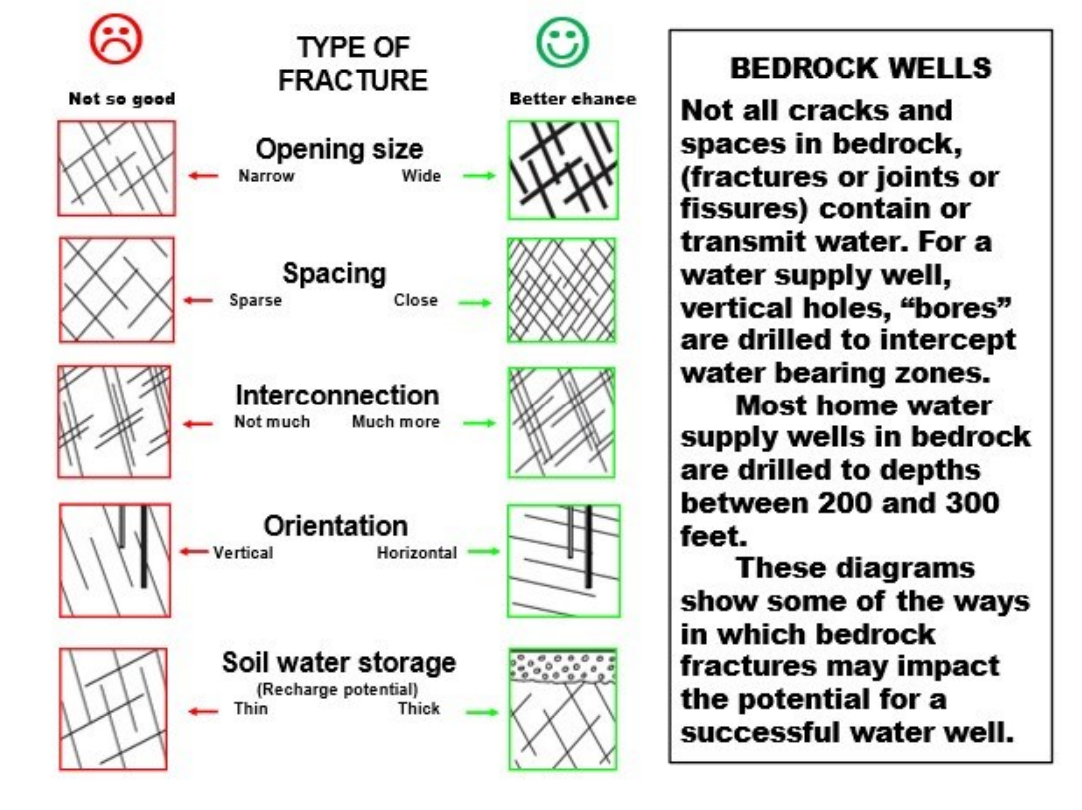
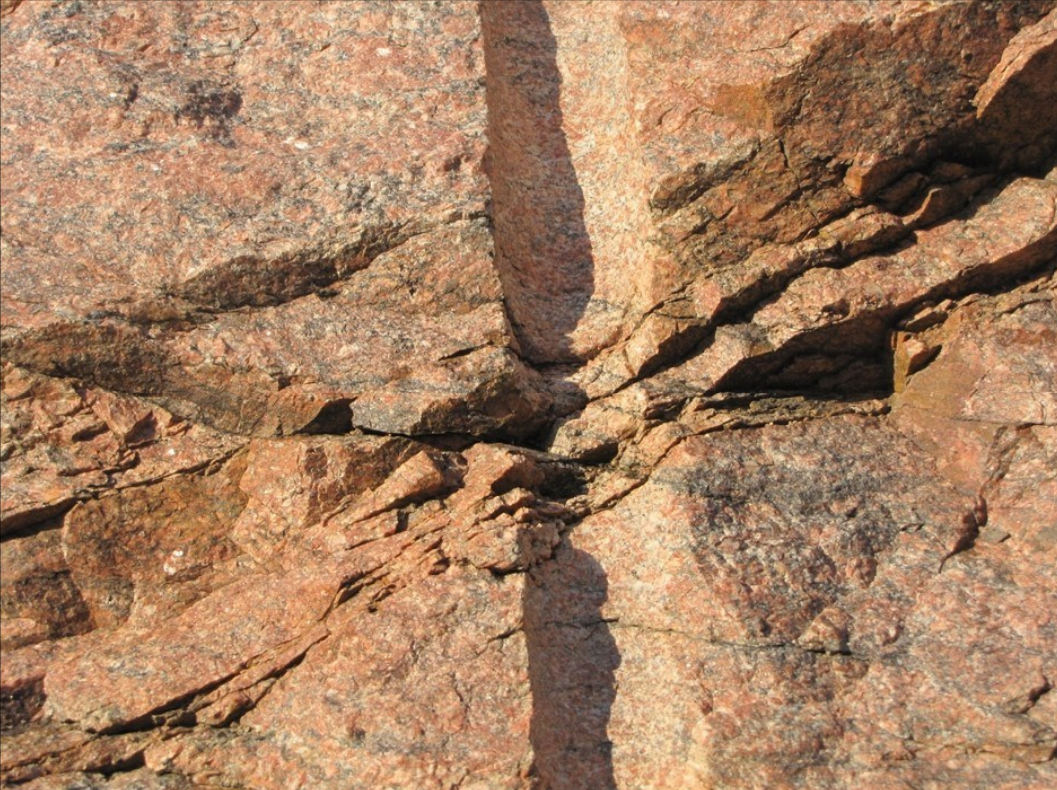
Every month Collier sends out employees all over to several conferences, see below to find out if you can catch us at any!
TRB Annual Meeting – January 5-9 in Washington, DC
OWGA Conference & Trade Show – January 9-10 in Stillwater, OK
AGWT Florida Groundwater Conference – January 14-15 in Orlando, FL
AWDB Midwinter Conference – January 24-25 in Austin, TX
Water for Texas Conference – January 27-29 in Austin, TX
TGWA Annual Convention – January 28-30 in Lubbock, TX
Collier geophysicists Ted Stieglitz, Jim Pfeiffer, Juan D. Ortega and Doug Laymon have just received the BEST POSTER Award from the The Society of Exploration Geophysicists for their 2024 Image Poster that was presented in August of this year, discussing noise on high density near surface seismic reflection data.
Check out their Abstract using the link below!
https://imageevent.aapg.org/portals/26/abstracts/2024/4087749.pdf
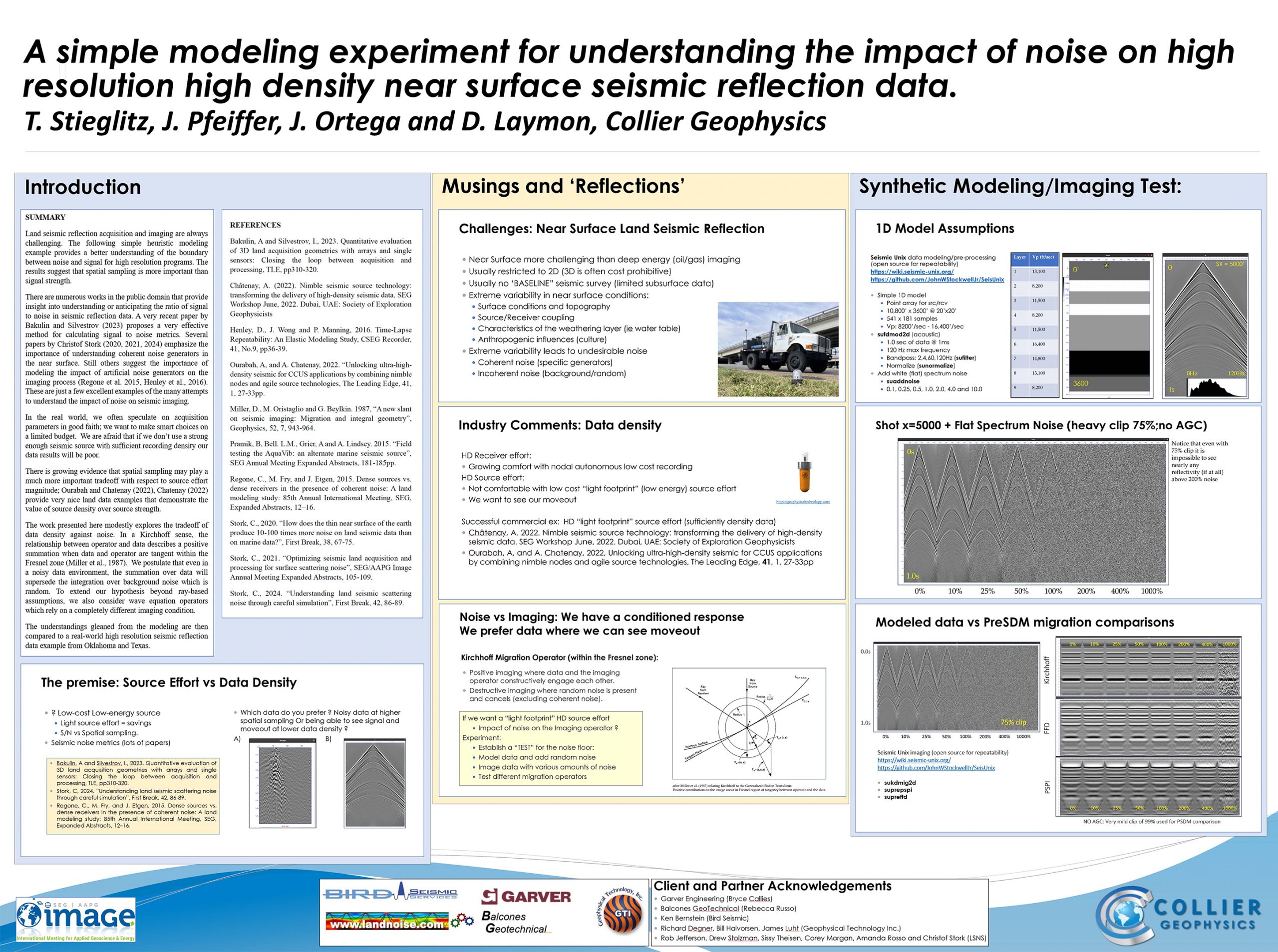

Offices in multiple states, jobs that travel the world, and a team of professionals across the board. Check out our open positions on our hiring page below!



Picture of the month prepared by Andrew Stone, Hydrogeologist, andrewstone@gmail.com
GOLDEN GATE PARK, SAN FRANCISCO, WIND PUMP
Ah! … This is NOT a windmill. Simple explanation is that this is a wind operated pump and not a wind operated mill. OK? Likewise, it is wind turbines, not windmills that are contributing to the national electricity grid.
Photo Credit: Andrew Stone
The origins of the San Francisco wind pumps (there were two) began in the late 1800s when irrigation water was needed or the west end of the 1,000-acre Golden Gate Park. Initially, water was supplied by the Spring Valley Water Company, but the City of San Francisco realized that pumping their own groundwater from the old sand-dune aquifer beneath the park was a much less expensive option. The first windpump was completed in 1903 and produced 2,000 gallons an hour. A second wind pump was constructed in 1908 with a pumping capacity of 40,000 gallons per hour. The George E. Dow Pumping Company installed the pump system(photo 1). Together, the two windmills pumped up to 1.5 million gallons a day to reservoirs in the park(photo 2). However, by 1913 the wind driven pumps were replaced by electric pumps. After many decades of disrepair, action by conservation groups has led to restoration of both windmills as historic monuments. (Few people know when they were built, what they were built for or are likely to ever call them by their correct functional name of windpump!)
WIND PUMPS (WINDMILLS) AT GOLDEN GATE PARK – SAN FRANCISCO
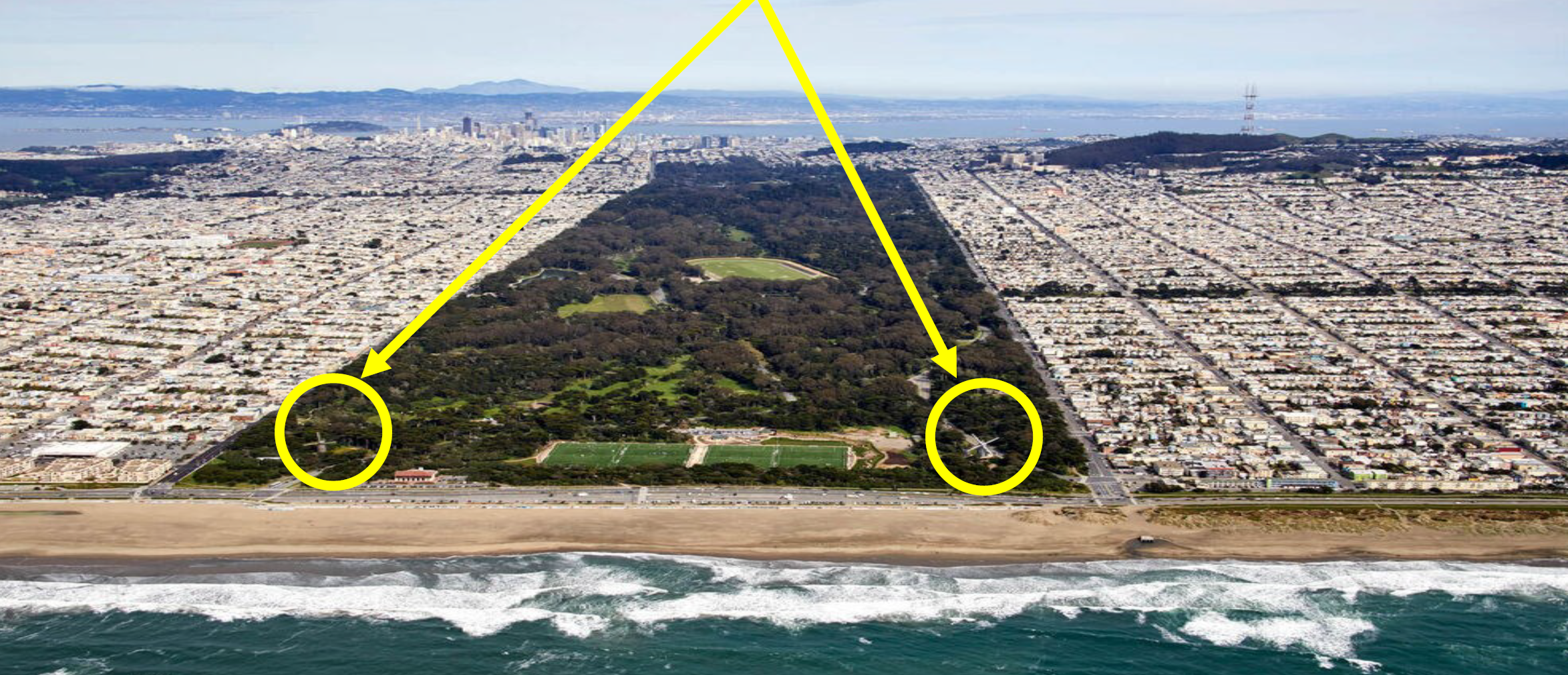
Photo Source: http://assets.ltkcontent.com/images/931020/golden-gate-park_3b74c0a0aa.jpg
For links and more information
Windmill Power for Golden Gate Park – 1914
Historical San Francisco News Update from 2000
Every month Collier sends out employees all over to several conferences, see below to find out if you can catch us at any!
Georgia Transportation Summit – December 3rd in Athens, GA
USACE LRD Industry Day – December 4th in Cincinnati, OH
NGWA Groundwater Week – December 10th in Las Vegas, NV
SAME JAX Industry Day – December 10th in Jacksonville, FL
Ground Penetrating Radar (GPR) is a non-destructive tool that uses radar pulses to image the subsurface. Here are just some key applications:
▪ Utility Mapping
▪ Concrete Inspection
▪ Environmental Studies
▪ Archaeological Digs
▪ Transportation
▪ Geological Mapping
▪ Geologic Hazards
▪ Forensics
▪ Landfill Characterization
▪ And many more!
GPR’s versatility makes it useful across multiple applications.

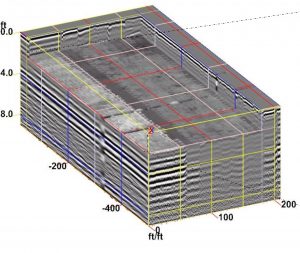
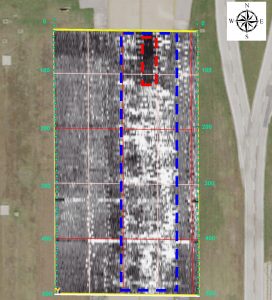
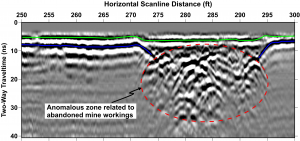
Picture of the month prepared by Andrew Stone, Hydrogeologist, (andrewstone @ gmail.com)
THREE ROCK TYPES IN ONE PHOTOGRAPH
1. Dolerite (igneous – intrusive volcanic)
2. Mudstone (sedimentary)
3. Where the dolerite as molten magma “cooked” the sedimentary rock, (metamorphic)

Photo Credit: Andrew Stone
The sedimentary layers in the photograph are in the Beaufort Group of the Karoo Sedimentary Basin in South Africa and were deposited about 250 million years ago. The igneous dolerite dike (1.) resulted from volcanic activity about 180 million years ago. Dikes can serve as barriers or as conduits for groundwater movement. Geophysical techniques are typically used to help characterize the geometry of subsurface geology in areas where dykes and sills occur.
Sill or Dike?
A sill of igneous rock does not cut across preexisting rock beds and is described as concordant. An igneous dike (as shown in the photograph) is described as discordant and does cut across the layers of older rocks.
For links and more information:
Every month Collier sends out employees all over to several conferences, see below to find out if you can catch us at any!
Rocky Mountain Geo-Conference – November 1st in Westminster, CO
SEG 4D Forum – November 4-6 in Galveston, TX
Geology Days Conference – November 11-13 in Saratoga Springs, NY
SAME Dam & Levee Resilience Conference – November 12-14 in Davis, CA
Southeastern Transportation Geotechnical Engineering Conference – November 18-21 in Baton Rouge, LA
Oklahoma Governor’s Water Conference – November 19-20 in Norman, OK
SAME Federal Small Business Conference – November 20-22 in New Orleans, LA

